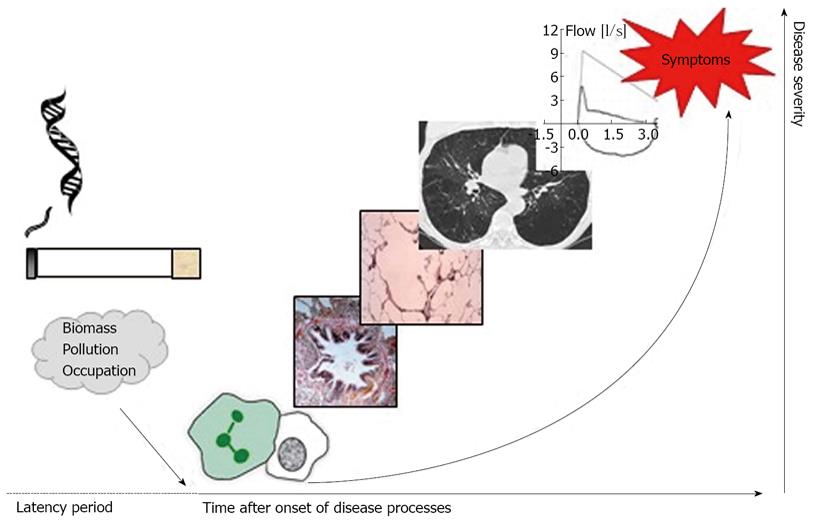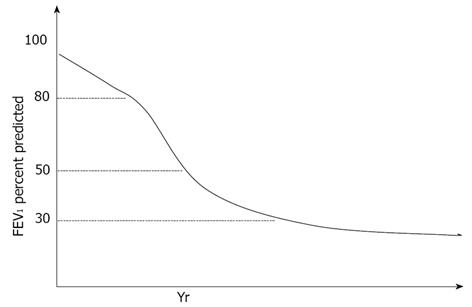Copyright
©2013 Baishideng Publishing Group Co.
World J Respirol. Nov 28, 2013; 3(3): 57-66
Published online Nov 28, 2013. doi: 10.5320/wjr.v3.i3.57
Published online Nov 28, 2013. doi: 10.5320/wjr.v3.i3.57
Figure 1 Disease progression in chronic obstructive pulmonary disease.
Genetic factors interact with exposures, predominantly cigarette smoke, but also others such as biomass smoke to cause cellular changes in the lung, including inflammation. These cause changes that can be detected first at a pathological level - for instance subtle small airway changes or early emphysema. Later these are seen radiologically, and finally physiologically. Symptoms may occur after physiological changes occur, or in some cases earlier in the disease process. Indeed by the time symptoms develop it is likely the disease is established and may no longer be true “early” chronic obstructive pulmonary disease.
Figure 2 Lung function decline in chronic obstructive pulmonary disease.
Forced expiratory volume in 1 second (FEV1) declines at a rate of about 40 mL/year when FEV1 is 80% or more; in some at risk populations such as those with AATD it may be much higher. When FEV1 is between 50%-80% FEV1 declines fastest, ranging 50-80 mL/year, then declines to a rate of 35 mL/year or less once FEV1 reaches 30% predicted.
- Citation: Brebner JA, Turner AM. Early chronic obstructive pulmonary disease: Beyond spirometry. World J Respirol 2013; 3(3): 57-66
- URL: https://www.wjgnet.com/2218-6255/full/v3/i3/57.htm
- DOI: https://dx.doi.org/10.5320/wjr.v3.i3.57










